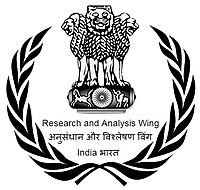
Photo from wikipedia
Satellite data, together with spatial technologies, have a vital importance in earth sciences to continuously monitor natural and physical processes. However, images taken by earth-observing satellites are often associated with… Click to show full abstract
Satellite data, together with spatial technologies, have a vital importance in earth sciences to continuously monitor natural and physical processes. However, images taken by earth-observing satellites are often associated with uncertainties due to atmospheric effects (i.e., absorption and scattering by atmospheric gases and aerosols). In this paper, a more adaptable approach for the removal of atmospheric effects from satellite data is introduced within an operational research perspective by utilizing nonparametric regression splines. Regional atmospheric correction models via multivariate adaptive regression splines (MARS) are applied on a set of satellite images for Alps and Turkey to calculate surface reflectance values. A classical radiative transfer based atmospheric correction method is likewise employed on the same data set. The results are compared in terms of relative differences with respect to surface reflectance data. MARS provides significant improvement in the order of 40 and 37 % for Alps and Turkey, respectively.
Journal Title: Operational Research
Year Published: 2017
Link to full text (if available)
Share on Social Media: Sign Up to like & get
recommendations!